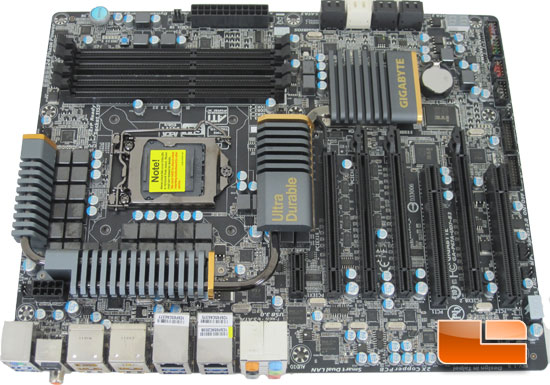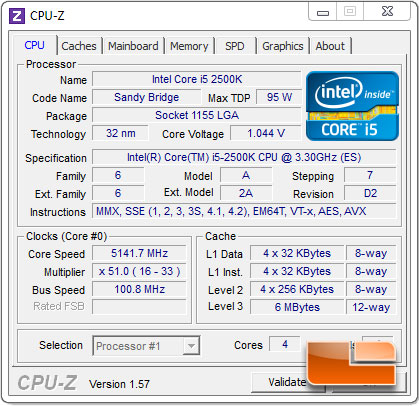GIGABYTE P67A-UD7-B3 Motherboard Review
Final Thoughts and Conclusion

One of the deterring factors for the GIGABYTE P67A-UD7-B3 is the price tag. While it does carry a price of $314.99 plus $9.48 shipping, it has a number of features that warrant this price. For starters the GIGABYTE P67A-UD7-B3 is one of only a handful of motherboards that offer up to 10 USB 3.0 ports, plus an additional 8 USB 2.0/1.1 ports! That means you can have up to 16 USB ports for all of your gaming gear and just about anything else you can think of!
USB Ports aren’t the only feature that make the GIGABYTE P67A-UD7-B3 stand out from the crowd. Todays CPU’s thirst for good clean power. GIGABYTE has us covered with the CPU power technologies that they have employed in the GIGABYTE P67A-UD7-B3. When we took a look at the GIGABYTE P67A-UD4 a few months back we saw that it had a 12 phase power design. The Flagship model P67A-UD7-B3 doubles that with a full 24 phases of power being delivered to the CPU. When the CPU is under a light load, the number of phases is cut back to save on power consumption.
It pains me to say this, when it comes to gaming the GIGABYTE P67A-UD7-B3 wasn’t the best performing board we have come across. Though it’s fair to say that is was surely capable of holding it’s own. The margins that we saw while enough to mention, aren’t enough that will be noticeable in day to day gaming. One area that the GIGABYTE P67A-UD7-B3 did take the top spot in was the SATA III 6Gbps testing. In both HD Tune and HD Tach the P67A-UD7-B3 was able to take the lead with the highest average read that we have seen to date with our Crucial C300 SSD. The average write speeds of the GIGABYTE P67A-UD7-B3 SATA III were nearly 10MB/s faster than our other boards in HD Tach!
One of the areas that many of us (myself included) want to know about when purchasing a shiny new motherboard, is the overclocking potential. Well I’m here to tell you, the GIGABYTE P67A-UD7-B3 has plenty! I was able to bring the Intel Core i5 2500K to a new high with the P67A-UD7-B3. Enabling the Internal PLL Voltage and Level 10 Load-Line calibration to reduce the V-Droop we were able to bring our Intel Core i5 2500K to 5141MHz. That is nearly 100MHz better than we have been able to achieve previously! Every chip is different, every board is different, but this is a good indication of what the GIGABYTE P67A-UD7-B3 is capable of in terms of overclocking.

One of the big changes we saw come along with the Intel P67 chipset was the implementation of UEFI BIOS by many of the motherboard manufacturers. In all honesty I’m still a little bit shocked that GIGABYTE didn’t switch their BIOS to UEFI like many of their competitors have. Though I do have to say, I’m undecided about the UEFI BIOS. There are things I like about it, and there is things I don’t. Perhaps it’s because I am much more comfortable with the traditional style BIOS that GIGABYTE is using on the P67A-UD7-B3. Perhaps it’s because each company is going for a distinct look and features that were in one place on one board are in different place on another.
The various technologies that GIGABYTE uses in their motherboards makes them nice and reliable. Though if you should happen to have an issue, GIGABYTE backs their motherboards with a three year warranty from the date of manufacture. For further details on GIGABYTE’s warranty policy you can head over to there website www.gigabyte.com/ or directly to the warranty page.
Legit Bottom Line: The GIGABYTE P67A-UD7-B3 has a long list of features that make it the flagship P67 motherboard from GIGABYTE! The performance simply backs up the title and will make it worth every cent!

Comments are closed.